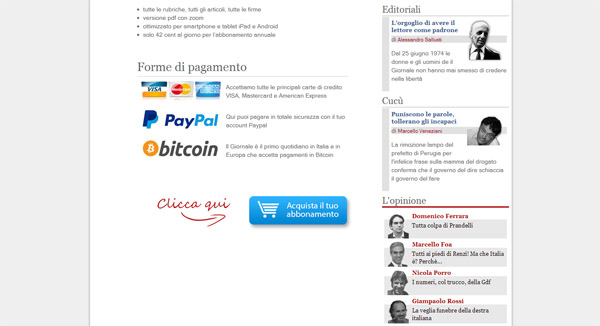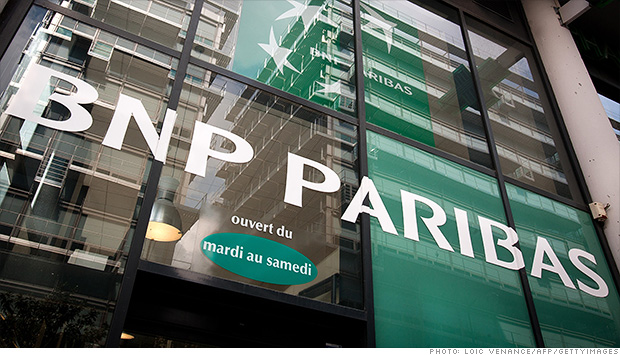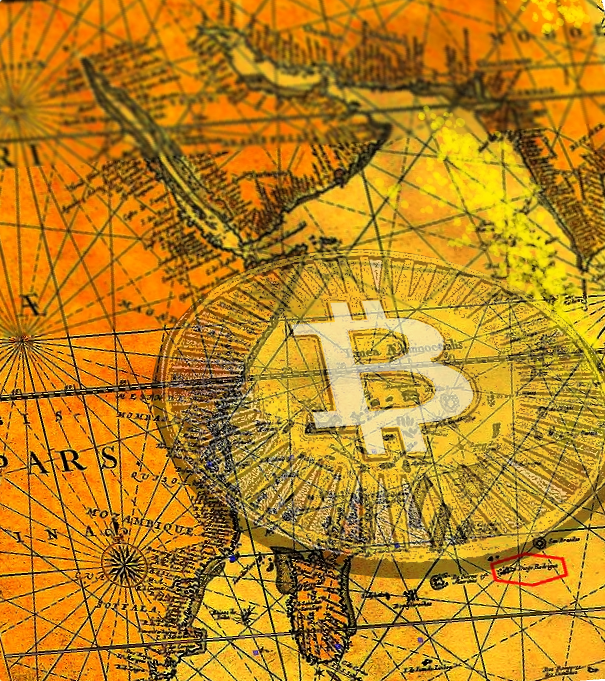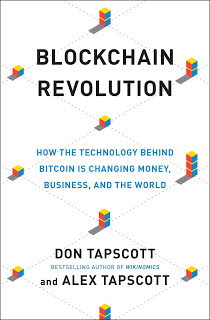Search Results For: italian
Italian Startup Helperbit will participate to the World Humanitarian Summit
Italian startup Helperbit has announced its participation to the Innovation Marketplace at the World Humanitarian Summit, event held by the United Nations on May 23 in Istanbul, Turkey.
What is World Humanitarian Summit
This event focuses on the daily problems that people all around the workd face everyday.
To do so, representatives of the government, local communities, international and humanitarian organizations are working together for a common goal: eliminate crisis and sufferings.The World Humanitarian Summit provides a great opportunity for worldwide leaders to help humanity in its difficult journey.
Innovation Marketplace
This particular event will show innovation, products and services that aims at improving people life. And now it also opened up to blockchain-related projects.
Among those startups, there will be Helperbit that use the distributed ledger to solve problems related to inefficiency, opacity and inadequate administration of the funds when disasters happen.
So, through the distributed ledger, Helperbit wants to make the flow of donations visible and transparent, so that the redistribution of money would be solved.
Helperbit is a natural disaster management platform that wants to help stricken people with a simple peer-to-peer donation system.
In fact, have you ever wondered what happens to the donated money? And what if it never reaches its final destination?
During the past few years, when a disaster event occurred, often someone talked about the fact that the money was gone and never reached the poor people affected.
How Helperbit Works
Open your free digital wallet here to store your cryptocurrencies in a safe place.

Major Italian newspaper il Giornale accepting Bitcoin for digital subscriptions
for digital subscriptions, we’re learning from a reader email this
morning. The bitcoin logo is boldly visible on il Giornale‘s digital subscriptions page [link], where nearby it says, “The Journal is the first newspaper in Italy and in Europe who accepts payments in Bitcoin.”
all news categories and articles in PDF files optimized for Android
smartphones, iPads, and other tablet devices.

given the paper’s previous interest in the digital currency. In early
February, the paper put up a bitcoin paywall as a test of how users
would interact with using bitcoin (users had the option of donating to a
non-profit). The results were overwhelmingly positive, with 713 donors.
While we haven’t exactly seen widespread adoption of bitcoin for
digital news subscriptions, it’s nice to see it getting a start in Italy.
Open your free digital wallet here to store your cryptocurrencies in a safe place.

First Bitcoin hearings at the Italian Parliament tomorrow
- Sebastiano Scrofina – CEO and Co-Founder at Dropis
- Guido Baroncini Turricchia – CoinCapital’s Partner
- Francesco Vatalaro – Università Di Tor Vergata
- Massimo Bernaschi – CNR
- Ferdinando Ametrano – Banca IMI – Università Bicocca
- Roberto Tudini – Studio Tudini&Tudini
 In the second part there will be a round table that will allow for the comparison of ideas and the points of view of different stakeholder. The event is organized by the On. Quintarelli and CoinCapital, bringing the Bitcoin inside the walls of the Italian Parliament allowing to highlight the risks and the opportunities.
In the second part there will be a round table that will allow for the comparison of ideas and the points of view of different stakeholder. The event is organized by the On. Quintarelli and CoinCapital, bringing the Bitcoin inside the walls of the Italian Parliament allowing to highlight the risks and the opportunities.Offering to the parliament a first overview and a neutral basis to start an aware and balanced discussion.
Open your free digital wallet here to store your cryptocurrencies in a safe place.

Intesa Sanpaolo Blockchain: a new trial for recordkeeping
The newest Italian Banca Intesa Sanpaolo blockchain – related project has been tested with the main goal of validating trading data.
Thanks also to a partnership with Deloitte and the Italian startup Eternity Wall, Intesa San Paolo started to test a new proof-of-concept at the end of 2016.
Heart of the project is the open-source OpenTimestamps protocol, developed by Peter Todd, a Bitcoin Core contributor, that Eternity Wall moved to implement.
The Intesa Sanpaolo blockchain project uses the bitcoin distributed ledger to notarize transactions and create a publicly available database trail for future referral.
Information security officer for the bank, Carlo Brezigia explained:
“Relevant data has been hashed to produce a short unique identifier – a digest – equivalent to its digital fingerprint. This fingerprint has been associated to a blockchain transaction and hence registered on the blockchain: the blockchain immutability provides robust non-refutable timestamping that will always prove without any doubt the existence of that data in that specific status at that precise moment in time.”
According to a Deloitte statement, Intesa Sanpaolo tested this tool between October and February with tht idea of including support for other blockchains, potentially including also private ledgers.
This Italian blockchain trial shows the will of regulated financial institutions to test public blockchains.
In an official announcement, the bank’s retail innovation accelerator officer, Gianni Cavallina, explained the interest in experimenting these protocols beyond the main use case of digital currenciese:
“In particular, considering public blockchains, we are exploring the applicability of different use cases, abstracting from the value of its native digital currency. Notarization is one of the most interesting applications.”
Intesa Sanpaolo Blockchain projects– also member of the R3 distributed ledger consortium – also include tests on several blockchain use cases made during the previous years, including trade finance and digital identity.
Read more about previous Italian projects related to the Blockchain here.
Open your free digital wallet here to store your cryptocurrencies in a safe place.

BNP Paribas Blockchain used for live transactions
A well-known worldwide seller and another important firm partecipated to the first live transactions using the BNP Paribas Blockchain service, as revealed today by the bank itself.
According to BNP Paribas, in fact, payments were processed between the Italian sports collectible firms Panini Group and the Australian packaging firm called Amcor.
The payment transactions were managed in a few minutes – the bank explained in the official press release – using different currencies to make transactions easier between bank accounts located in Germany, Netherlands and England.
Panini Group treasurer Fabrizio Masinelli commented in a statement:
“This proof-of-concept shows how powerful such technology can be and how it can be utilised as an effective and efficient response to the main issues that treasurers face on a daily basis.”
BNP Paribas Blockchain Proof of Concept
The transactions were managed by using the proof of concept called Cash Without Borders launched earlier this year after its incubation during a blockchain hackathon.
More Details about the size of the transactions will be revealed in the next future.
Also, the BNP Paribas blockchain service tested the so-called “mini-bonds” for small investments, as well as blockchain crowdfunding prototypes that might see the light next year.
According to the Panini Group’s official website, the company earned 751m euros in 2014 and employs 1,000 people worldwide.
Also, during the same year, Amcor earned $10b in sales and employs 29,000 employees.
To read more about the BNP Paribas Blockchain service click here.
Open your free digital wallet here to store your cryptocurrencies in a safe place.

Saxo Bank Bitcoin Prediction for 2017
Today the Danish investment bank published its Saxo Bank Bitcoin Prediction for 2017, where it explains that wouldn’t be surprised if the bitcoin price will see huge growth during next year.
Saxo Bank, in fact, recently published its annual “Outrageous Predictions for 2017”, a list of speculations that represent its effort to get financial industry think about more possibilities and revolutionary projects for the next year.
In addition to the prediction that UK will not actually leave the European Union (EU) and that Italian equity prices will soar thanks to the European Union led bailout, Saxo Bank affirmed that the bitcoin price will reach a value of more than $2,100 by the end of 2017.
Among its reasons the prediction explained that the American President’s administration might cause turbulence in the American economy, so this can be a good reason for people to invest in digital currencies like bitcoin.
Saxo Bank Bitcoin prediction explains:
“If the banking system as well as sovereigns such as Russia and China move to accept bitcoin as a partial alternative to the USD and the traditional banking and payment system, then we could see bitcoin easily triple over the next year going from the current $700 level to +$2,100 as the block-chains decentralised system, an inability to dilute the finite supply of bitcoins as well as low to no transaction costs gains more traction and acceptance globally.”
Altough this Saxo Bank prediction doesn’t represent an official position, it is not the first bullish indication the bank has made during its career.
In 2014, then-current CEO Lars Seier Christensen explained his personal interest in bitcoin, describing it as a great opportunity for worldwide investors.
At the time, Christensen had also mentioned about early testing of the technology within Saxo bank, although later he explained that liquidity problems at the time were keeping banks on the sidelines.
Source: coindesk.com
Open your free digital wallet here to store your cryptocurrencies in a safe place.
OpenBazaar Test: how the Bitcoin Ebay works
The Bitcoin Marketplace: OpenBazaar Test
Step-by-Step OpenBazaar Test: Follow this Guide to do some Shopping
1. First of all you need to go to the OpenBazaar website and click on the Download button you can find on the right top of the page.
2. A download will start soon. If it doesn’t, you just need to select your operating system such as Linux, Windows or Mac
3. After the download is completed, click on the file (maybe you will find it in the Download file) and launch it.
4. A new window will open where you have to complete your profile with info like name, timezone, avatar and your favorite currency.
5. You can also select your favorite theme to be used as a your profile template
6. Then you will be officially into your profile where you can add other info such as your social network profiles
7. Now you can start doing some shopping.
8. As you can imagine, I just had to click on the item I wanted to purchase.
Bitcoin Wallet

Open your free digital wallet here to store your cryptocurrencies in a safe place.

Can the Blockchain bring a real advantage to the Public Administration?
On June 17th, 2016 Blockchain Education Network Italia (BEN) will held an event in Rome at the Consiglio Regionale del Lazio.
Who is Ben?
Open your free digital wallet here to store your cryptocurrencies in a safe place.

The 5 must read Bitcoin Books
Blockchain Revolution by Don Tapscott and Alex Tapscott
The Bitcoin Bible by Benjamin Guttman
The Bitcoin Big Bang: How Alternative Currencies Are About to Change the World by Brian Kelly
Mastering Bitcoin by Andreas Antonopoulos
5) Bitcoin revolution: La moneta digitale alla conquista del mondo by Davide Capoti, Emanuele Colacchi, Matteo Maggioni
Open your free digital wallet here to store your cryptocurrencies in a safe place.
Bitcoin is “digital gold” and will mark the end of cash. Ametrano from IMI Bank explains.
Bitcoin is a private currency, that isn’t issued by any central bank nor guaranteed by any institution. It is electronically transferrable in a practically instant way, utilising a cryptographic security protocol. It is based on a completely decentralized network: the transactions don’t require a middleman, cannot be censored, don’t have any kind of geographical or amount restriction, and are possible 24 hours a day every day and are substantially free.
Open your free digital wallet here to store your cryptocurrencies in a safe place.